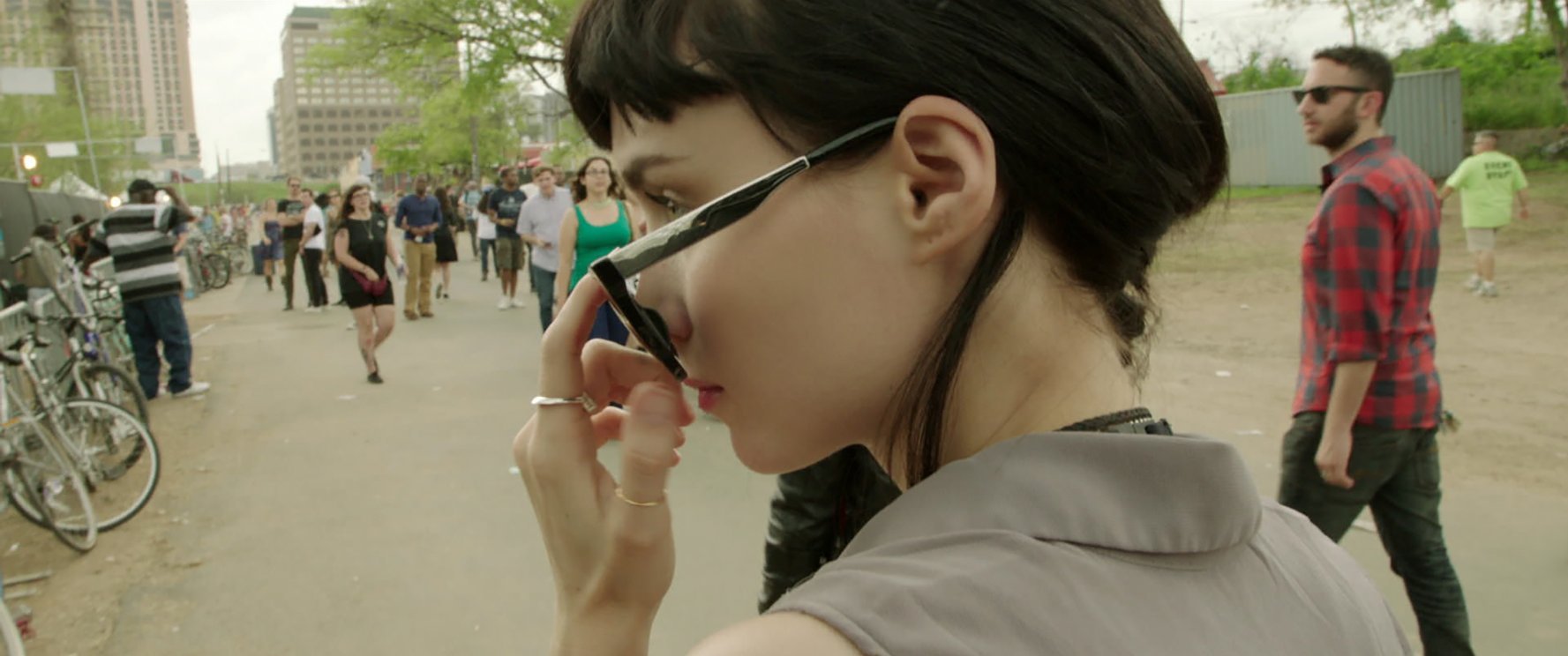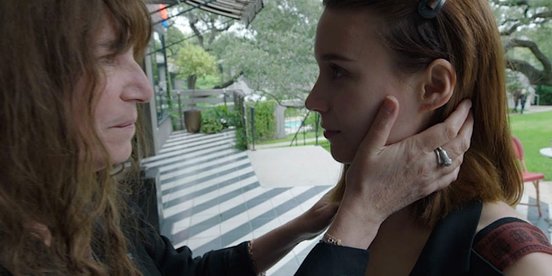|
"Real life is so hard to find." -Knight of Cups Directed by Terrence Malick. Starring Rooney Mara, Michael Fassbender, Ryan Gosling, Natalie Portman, et. al. Theatrical Trailer. Synopsis: A woman explores love, identity, and selfhood against the backdrop of the tumultuous Austin music scene. 129 mins. --- In 2009, as I was finishing my tour of duty at UW, I got excited. I was restless, and I wanted to birth out something of value, really push myself. I wrote a 457-page thesis about Pure Cinema, a form of filmmaking I consider the ultimate possibility of what movies can do. My professor wasn't exactly thrilled, but was still kind enough to nominate it for the Library Research Award. Briefly (in an effort to keep this post under 457 pages!), Pure CInema can be described as films, or sections of films, that communicate to the audience in a manner possible only in the film medium, bypassing the derivations of literature and the stage, relying instead on a potent mix of moving images and sounds. Have you ever noticed how your favorite scenes in movies are never the ones about story mechanics, but rather those immersed in the present moment, the parts which plunge you into the pulsing immediacy of life? Movies can be used to tell stories, and being a linear time-based art form they're great at that. But they can also do so much more. Most pictures don't take advantage of that possibility, and settle for something closer to filmed theatre. In my thesis I wrote about the director Terrence Malick, noting that with each successive film of his, he was getting closer to abandoning narrative entirely in favor of something more direct, more immediate, closer to our pure and fragmented experience of life and memory. In his 1990 novel Immortality, Milan Kundera wrote that memories, as they exist in our heads, are closer to photographs than films; they rarely involve a complete beginning, middle, and end. They're more like fragments. Malick aims for this, and the result is hypnotic. We don't get scenes; we get glimpses, glances that catch in our eye or in our heart, the things we notice but which are too subtle to talk about. These are films about the thoughts we all have but don't have the norms to express. His next picture after my thesis, 2011's Tree of Life (trailer), would delve deeper into this realm than ever before, and his next three movies would form an informal trilogy of sorts which communicated to the audience as no director has ever even attempted. The subjects of the three films aren't new ("a fall from grace, a journey through despair and finally a restoration of innocence and hope," respectively, as Justin Chang notes in his review below), but the execution is. Malick really is developing a new visual grammar here, no less seismic than Antonioni's initially derided L'Avventura, 47 years ago. That film was so radical in its photographic, structural and editing decisions that a volatile Cannes audience booed it at its first screening, threw things, and physically threatened its director and star to the point they had to flee the theatre! And wouldn't you know, it's a classic now. Growing pains…. That's why I'm writing to you about these weird abstract new large-scale art films that a lot of people are deriding. I have to do it. Change happens slowly in the mainstream, and when it doesn't it's hard for people. The attitude toward these films is going to change dramatically over the next decade, and if you'll forgive my saying so, you heard it here first. We might ask what all these movies actually look like. Try this trailer for Knight of Cups, the second film of the trilogy. It's condensed, of course, but the approach is pretty truthful to the experience of watching the film: you get an impression of a successful screenwriter in Hollywood feeling adrift despite his material successes and access to pleasure. By way of a very active and probing camera that focuses on details, along with narration giving voice to the characters' private, interior musings, we get a palpable sense of the protagonist's yearning for substance, for a spiritual awakening of sorts, but not knowing quite how to get there. It's fresher and more involving than ordinarily blocked and scripted scenes of the same. You don't think the movie; you feel it. Almost all criticism of late-period Malick has to do with complaining about the fact that his movies aren't like normal movies. I say walk in with an open mind, and dare yourself to watch it without judging it by the standards of something it isn't trying to be. Others may cry pretentiousness or portentousness, but should we really take an artist to task for actually trying to do something, for taking his craft seriously and attempting to reach beyond his grasp? Here's what I wrote in 2013 about watching To the Wonder (trailer), the first of the trilogy: The film assumes your understanding of the basic plot and chooses to go deeper, dispensing with story and exploring instead the textures of this search. The approach feels both broadly sketched and startlingly intimate (especially in its use of voiceover) at the same time. Definitely the most abstract of Malick's already fairly abstract work, the content of To The Wonder is told mostly through its elliptically sequenced images. Affleck told audiences at Telluride that the film "makes Tree of Life look like Transformers," and indeed, it's a challenging film- but only if you're expecting a normal movie. I say let the images wash over you. The joy of the camera, swinging through the trees in Paris, making tangible the energy of early love; the mystery of the last two shots, which when paired together evoke a loss, but also the calmness of having been found; whispered nothings on the soundtrack, ruminations of lonely people, as they walk around in the corners of the widescreen frame. Don't try to decode everything- let the ideas and sensations work their way into you, right-brain style, of their own accord. Things will click together on your drive home, or a day later. I'd go on about how much I love the director's lack of irony and why that makes him ahead of his time, or the natural light cinematography and the beauty it sees in the most unlikely of realms, Malick's process of searching for extemporaneous moments with the actors instead of using a script, his tendency toward articulating a pre-considered outline by improvising the details... but I don't want to bore you (links to all that below). Just go watch the thing. It's a trilogy in theme only; there's no need to have seen the previous pictures. All three films involve searching for solace in the cacophony outside oneself, and eventually finding it within. You may be fascinated by that and love it, as I did, or you may leave it (I've never seen more walkouts than during a 2012 Tree of Life screening in Bellevue), but you'll never have seen anything like it. When your friends start complaining about how American movies aren't original, or modern movies aren't daring anymore, you'll know what to say. --- Song to Song is currently playing in NY and LA. It opens in limited release in Seattle on Friday. Further reading: The thoughtful take: Song to Song: Terrence Malick's Romantic Idealism: Richard Brody (The New Yorker). Brody boldly championed Knight of Cups a year ago, and continues here. The lively take: Terrence Malick's Song to Song film review: A masterpiece, life-changing and other superlatives I stand by (Chris Hooton, The Independent): "It is suffused with that feeling of when you want to cry but can't." Legendary: Terrence Malick Makes a Rare Appearance at SXSW 2017 and Digs Deep On His Process (Indiewire). This is seriously the stuff of legend: Malick, a notorious recluse who once took twenty years off between films and was photographed less than five times before the invention of the internet, does his first interview here since 1979! Song to Song (review). Carson Lund (Slant). Cosmic Questions (ASC): Creating emotionally resonant imagery on Tree of Life. Details the rules Malick and Lubezki established together for how to shoot the films. Terrence Malick's 'Song to Song' finds beauty, frustration and hope in the Austin music scene (review). Justin Chang (Los Angeles Times). Song to Song review – Terrence Malick returns to form with lyrical love triangle (The Guardian). Thoughts from across the pond. Images courtesy Broad Green Pictures.
2 Comments
Kelly
3/23/2017 04:21:43 pm
Good review Nathan, when I read this I thought about the dreams I have when I'm sleeping. They aren't "stories" so much as experiences: A house (never been there before, but it's my house), people (don't know most of them, but they're important somehow), an event (which event? Doesn't matter, something is happening). And those are the films that Malick is now making.
Reply
Nathan
3/25/2017 10:22:48 am
Kelly! Well put, regarding the nature of dreams and how Malick has managed to tap into that sensation. For myself, I can't get enough.
Reply
Leave a Reply. |
Nathan
Archives
July 2024
Categories |


 RSS Feed
RSS Feed
